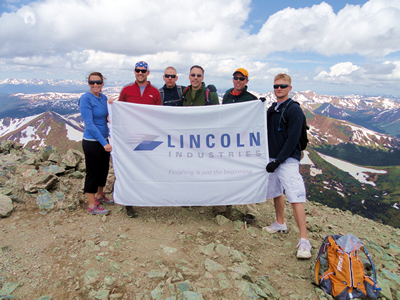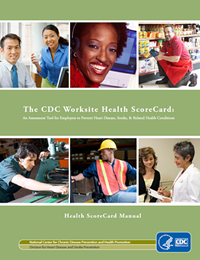TWH™ in Action!
Volume 1 Number 3 October 2012

Managers’ Buzz
BY: ANITA L. SCHILL, PhD AND L. CASEY CHOSEWOOD, MD

In September, Trust for America’s Health (TFAH) and the Robert Wood Johnson Foundation (RWJF) released the ninth edition report, F as in Fat: How Obesity Threatens America’s Future 2012. It tells a compelling story of how the health of the United States is directly linked to the current obesity epidemic. The report projects that if obesity rates continue on the same track, 44% or more of adults in every state will be obese and in 13 states the rate will exceed 60% by the year 2030! Assuming these rates, the number of new cases of type 2 diabetes, coronary heart disease and stroke, hypertension, and arthritis could increase 10-fold between 2010 and 2020 and then double again by 2030. Obesity-related health care costs will, of course, increase correspondingly. However, if average adult body mass index could be reduced by just 5%, millions of Americans would be protected from serious health problems and billions of dollars would be saved in health care-related spending.
As we work together to confront epidemic levels of obesity and other challenges facing the American workforce, NIOSH believes integrating the protection of worker health and safety with evidence-based health promotion will be a key strategy to prevent worker injury and illness and advance health and well-being of workers. With access to about 2/3 of all adults of working age, today’s workplaces offer many opportunities to impact the health behaviors of millions of individuals and their families.

One of these opportunities is to fight the obesity epidemic in the workplace by addressing job characteristics that are associated with obesity. In the article, “Ergonomics: Fitting the Job for Total Worker Health®,” Dr. Laura Punnett explains that the physical and psychosocial work environment has a significant impact on health behaviors, including those that are risk factors for obesity. Read her article for more information about specific work-related factors that contribute to obesity.
Another opportunity in the workplace to impact health behaviors is the implementation of health promotion and wellness programs. In fact, 67% of companies with three or more employees that offer health benefits also offer one or more wellness programs. In Promising Practices for Total Worker Health®, read how Lincoln Industries creates a culture of health and specifically targets metabolic syndrome risk factors, which include obesity and its health-related consequences. Lincoln Industries successfully made health and wellness an integral component of their business strategy and their wellness programs demonstrate a return on investment of 4:1.
The newly released CDC Worksite Health ScoreCard: A tool designed to help employers assess and improve health promotion in their worksites provides a blueprint for employers to impact the health behaviors of their employees. Read about the ScoreCard in News from our Partners. In addition to these feature articles, this issue of TWH® in Action! is full of news from the NIOSH Centers of Excellence to Promote a Healthier Workforce, new initiatives and resources, and upcoming conferences and webinars.
As always, we hope this newsletter inspires you to be creative in your efforts. We’d love to hear from you! Share your comments and stories about TWH® in Action! with us on Twitter (@NIOSH_TWH), join our newly established NIOSH Total Worker HealthTM LinkedIn Group, or send us an email at twh@cdc.gov.
REFERENCES:
http://healthyamericans.org/report/100/
http://www.healthaffairs.org/healthpolicybriefs/
Total Worker HealthTM Exclusive
Ergonomics: Fitting the Job for Total Worker HealthTM
BY: LAURA PUNNETT, ScD, PROFESSOR, UNIVERSITY OF MASSACHUSETTS LOWELL, & CO-DIRECTOR, CENTER FOR THE PROMOTION OF HEALTH IN THE NEW ENGLAND WORKFORCE (CPH-NEW)
Total Worker HealthTM (TWHTM) champions the idea that workplace health promotion programs could be more effective if they incorporate attention to workplace health protection, and vice versa. What exactly does this mean in practice?
One particular approach is by the Center for the Promotion of Health in the New England Workforce (CPH-NEW), one of the four NIOSH Centers of Excellence to Promote a Healthier Workforce. CPH-NEW shapes their approach with the relatively new knowledge about the role of working conditions as obstacles to health promotion goals as well as the fact that many workplace health promotion (WHP) programs are not very successful with low-income workers.
Traditionally, WHP has focused on trying to improve individuals’ health behaviors (exercise, diet, smoking, etc.), stress management and/or coping skills. However, these behaviors should be viewed not only as individual choices but also as decisions made in relation to the person’s environment. A great deal of scientific evidence now shows that the physical and psychosocial work environment also has a large impact on health behaviors. For example, work scheduling (e.g., night shifts, overtime) is an important risk factor in eating and exercise patterns and obesity. Few opportunities for decision-making on the job are strongly associated with obesity, alcohol consumption, smoking, and lack of aerobic exercise during leisure time.
WHP professionals often feel that they can do nothing about the working conditions of the employees whom they are trying to reach. Yet these conditions are not necessarily fixed and immutable. Improved work organization can provide time, space, and material and social support for improvements in dietary choices, smoking cessation, participation in exercise classes, and improved work-family balance. On the other hand, ignoring the underlying causes of stress by failing to address psychosocial stressors at work may undermine the very health goals that are targeted by a WHP program.
Even worse, these job features often land most heavily on low-income workers. Thus, it should not be surprising if their participation is lower, their drop-out rates are higher, or their outcomes are less successful.
How can this dilemma be resolved, and where does ergonomics fit in? Occupational ergonomics is the science of “fitting the job to the worker.” It is not only concerned about finding correct workstation heights or preventing musculoskeletal disorders – in its broadest conceptualization, it provides a framework to address the workplace preconditions of job stress. Ergonomics offers several important contributions to WHP programming.
First, ergonomists are trained to address the broad range of work organization issues that are relevant here, including job design to increase decision latitude, optimize work scheduling, and improve quality of supervision. Engaging an ergonomist as a WHP partner can both remove obstacles to program participation and increase workers’ trust in the employer.
Second, in program goals and activities, consider accommodating the physical and psychosocial demands of workers’ jobs. Someone who stands all day long may experience fatigue or pain at the end of the day that greatly decreases motivation to exercise.
Third, and in many ways most important, participatory ergonomics offers a very useful model for program design, starting with engaging workers themselves in identifying their health priorities and the environmental factors that affect their health. Since lack of decision-making opportunities at work is itself an important risk factor for health as well as for health behaviors, it is critical to implement workplace programs from top-down and the bottom up to increase workers’ role in decision-making.
Incorporating ergonomic concepts into WHP in these ways can help to improve individual health and start to help to reduce socio-economic disparities in health.
Three Ways to Incorporate Ergonomics with Workplace Health Promotion
- Partner with your organizational teams in health promotion, safety, and ergonomics to remove obstacles and enhance program participation and increase workers’ trust in the employer.
- In program goals and activities, accommodate for the physical and social demands of workers.
- Use a participatory approach to implement programs to help increase workers’ role in decision-making.
Promising Practices for Total Worker Health®
In Promising Practices for Total Worker Health® we share with you examples of how employers from across the country and from a wide range of industries are taking steps to effectively integrate both health promotion and health protection in their workplaces.
If your organization is proactively integrating health protection and health promotion to prevent injury and illness and advance the well-being of your workers, please email us at twh@cdc.gov.
Disclaimer: The mention of organizations and commercial entities and products in this article is for illustrative purposes only and does not represent an endorsement by NIOSH, CDC or the US Department of Health and Human Services
A CULTURE OF HEALTH: A KEY DRIVER FOR LINCOLN INDUSTRIES – A SUCCESSFUL HIGH-PERFORMANCE MANUFACTURING ORGANIZATION
BY: SUSAN SPRIGG, BSN, RN – PUBLIC HEALTH ANALYST, NIOSH

Lincoln Industries Employees
Lincoln Industries (http://lincolnindustries.com/) is a metal finishing plant in Lincoln, Nebraska. Out of their 550 employees – who they prefer to call their “people” – about 2/3 of them spend their days involved in physically demanding tasks on the factory floor, requiring effort and repetitive motion. This is an environment which is typically prone to worker injuries. However, with some innovative new approaches to the total health of their people, Lincoln Industries has been able to have an impressive impact on their injury rates, their wellness statistics, and their bottom line. Their efforts have not gone unrecognized. They have been a platinum winner of the American Heart Association’s “Start! Fit-Friendly Workplace” on four different occasions. And, have been named one of the “25 Best Medium Companies to Work For” by the Great Places to Work® Institute, among many others.
According to their Wellness Manager, Greg Howe, Lincoln Industries has had a strong culture of wellness for its entire 60 years in the manufacturing industry. Two of their primary business drivers express this clearly:
- A safe working environment is our commitment to each other.
- Wellness and healthy lifestyles are important to our success.
These two beliefs are integrated into day-to-day operations of the company. In fact, the expectation that their people are striving toward health and wellness is so ingrained that annual performance plans include fitness and wellness goals for the year. As Lincoln Industries says, “a healthy employee makes for a safer working environment.” Below we outline some of their innovative strategies for total worker health and incentive plans:
-
go! Platinum: Lincoln Industries targets metabolic syndrome risk factors in their go! Platinum program. Metabolic Syndrome is a collection of risk factors that can dramatically increase one’s chance of developing heart disease, diabetes, or having a stroke.
There are multiple levels and goals within the go! Platinum program, each with its own incentive. People earn points by reaching wellness goals, including: becoming tobacco free; reaching targets for blood pressure, waist circumference, blood glucose, triglycerides, and HDL cholesterol; and participating in health reviews and assessments.
There is an enticing incentive for reaching these goals. If you reach the highest level of the program and pass a basic fitness test, you are invited to join others in the company on an inspiring climb of a 14,000 foot mountain in Colorado. This year, they have over 100 people making the climb. - Stretching: Lincoln Industries recognizes that preparing the body physically for a day of work is vital. To that end, in 1993 they instituted a plant-wide stretching program. Every morning, everyone spends 15 minutes doing a series of stretches specifically designed to prepare the muscles that will be most used. This routine is reviewed periodically to see if it needs to be updated or altered.
- Massage: We all know that professional football players or baseball players may have lots of targeted therapies to decrease the risk of injury – including massage. Lincoln Industries has used this model, looking at athletic research, to see how to reduce injuries among their own “athletes.” Every couple of weeks they bring in massage therapists who are trained to target the muscles at risk. This program has multiple benefits. Looking at the dollars and cents, Lincoln has seen a dramatic decrease in major injuries among their workers since the program was implemented. But even more important, Lincoln Industries people go home feeling healthier, stronger, and cared for.
Physical wellness is only one aspect of the Lincoln Industries program. They have identified six major areas of wellness: career, financial, emotional, physical, spiritual, and social. In addition to the programs above, Lincoln Industries offers an on-site clinic for health maintenance, wellness coaching, and acute care; community service opportunities; counseling and support programs; and opportunities to engage in social and fitness events. Helping their people reach wellness in these other areas is critical for allowing them to focus on doing their best during the work day.
As stated, the leadership of Lincoln Industries has long been committed to wellness for its own sake. However, they have also been able to demonstrate a financial benefit to their programs. The Lincoln Industries wellness programs have demonstrated a return on investment of 4 to1; this includes savings in health care costs, workers compensation, absenteeism, and employee turnover. In an era where health care costs are dramatically increasing, Lincoln Industries has been able to hold these costs flat since 2007.
But whether it is done for financial or other reasons, these programs help produce stories like the one Greg Howe told us about John. John was a 50+ year old, 2-pack-a-day smoker working at Lincoln Industries. He decided to do their on-the-clock smoking cessation program – and from there branched into the other wellness programs. Now he’s quit smoking, lost 80 pounds, run 2 half-marathons, climbed 3 mountains, and returned to college at age 56.
These are the stories that inspire Lincoln Industries. Their hope is that their people feel as good when they go home as they did when they arrived. Working together, Lincoln Industries has found innovative ways to reach that goal.
To learn more about Lincoln Industries’ wellness program, visit: http://lincolnindustries.com/home/who-we-are/wellness/.
Updates from the NIOSH Centers of Excellence to Promote a Healthier Workforce
The Center for the Promotion of Health in the New England Workplace (CPH-NEW)
In CPH News and Views, contributor Tony LaMontagne, ScD, MA, MEd, from the McCaughey Centre, Melbourne School of Population Health, University of Melbourne (AUSTRALIA) shares practical organizational strategies for addressing workplace stress in his article Job Stress Prevention and Control: Developing Best Practice. http://bit.ly/Q6ih7E
Harvard Center for Work, Health and Wellbeing
Our Harvard center announces the release of the SafeWell Practice Guidelines. The SafeWell Practice Guidelines provides a model, strategies, and resources for comprehensive approaches to worker health that integrate and coordinate efforts to: 1) promote healthy behaviors, 2) ensure a safe and healthy work environment, and 3) provide resources for balancing work and life.
University of Iowa Healthier Workforce Center for Excellence (HWCE)
Looking for interactive health tutorials on topics related to back pain, smoking, stress, sleep disorders and more? Check out the Iowa Healthier Workforce Center of Excellence website: http://www.public-health.uiowa.edu/hwce/resources/tutorials.html
Oregon Healthy Workforce Center (ORhwc)
The Oregon Healthy WorkForce Center will hold a wellness short course titled “Excellence in Worksite Wellness: Taking your program to the next level” at the Oregon Governor’s Occupational Safety and Health (GOSH) Conference, to be held March 4-7, 2013, at the Oregon Convention Center in Portland. For more information, visit http://oregongosh.com/
News from our Partners
Newly released CDC Worksite Health ScoreCard: A tool designed to help employers assess and improve health promotion in their worksites
Recently the Centers for Disease Control and Prevention (CDC) released a new tool a new tool designed to assist employers in identifying gaps in their health promotion programs, and to help them prioritize high-impact strategies for health promotion at their worksites. The new tool is called the CDC Worksite Health ScoreCard (HSC).
The tool was developed by the CDC Division for Heart Disease and Stroke Prevention in collaboration with the Emory University Institute for Health and Productivity Studies (IHPS), the Research Triangle Institute, the CDC National Center for Chronic Disease Prevention and Health Promotion (NCCDPHP) Workplace Workgroup, and an expert panel of federal, state, academic, and private sector. Included in the Workplace Workgroup are Dr. Casey Chosewood and Ms. Jeannie Nigam, both of NIOSH’s Total Worker HealthTM Program.

Why Use The CDC Worksite Health ScoreCard?
The United States is facing an unparalleled health epidemic, driven largely by chronic diseases that are threatening American businesses’ competitiveness because of lost productivity and unsustainable health care costs. The medical care costs of people with chronic diseases were reported in 2009 to account for more than 75% of the nation’s $2.2 trillion medical care costs.
While employers have a responsibility to provide a safe and hazard-free workplace, they also have abundant opportunities to promote individual health and foster a healthy work environment. CDC encourages employers to provide their employees with preventive services, training and tools, and an environment to support healthy behaviors.
Who can use The CDC Worksite Health ScoreCard?
Employers, human resource managers, health benefit managers, health education staff, occupational nurses, medical directors, wellness directors, or others responsible for worksite health promotion in an organization can use The CDC Health ScoreCard to establish benchmarks and track improvements (evaluation) over time. State health departments may assist employers and business coalitions in using the tool and help find ways to establish healthier workplaces. State health departments also can use the tool for monitoring worksite practices, establishing best practice benchmarks, and to track improvements in worksite health promotion programs over time to more effectively direct resources to support employers.
What can The CDC Worksite Health ScoreCard tell you?
The tool contains 100 questions that assess how evidence-based health promotion strategies are implemented at a worksite. These strategies include health promoting counseling services, environmental supports, policies, health plan benefits, and other worksite programs shown to be effective in preventing heart disease, stroke, and related health conditions. Employers can use this tool to assess how a comprehensive health promotion and disease prevention program is offered to their employees, to help identify program gaps, and to prioritize across the following health topics:
- Organizational Supports (18 questions)
- Tobacco Control (10 questions)
- Nutrition (13 questions)
- Physical Activity (9 questions)
- Weight Management (5 questions)
- Stress Management (6 questions)
- Depression (7 questions)
- High Blood Pressure (7 questions)
- High Cholesterol (6 questions)
- Diabetes (6 questions)
- Signs and Symptoms of Heart Attack and Stroke (4 questions)
- Emergency Response to Heart Attack and Stroke (9 questions)
Will there be additional questions added to the CDC Worksite Health ScoreCard?
Yes. The ScoreCard will continue to evolve to help organizations better evaluate their progress and identify new challenge areas for intervention. Currently there are modules in review on occupational safety and health, community resources, and lactation support.
To read more and to download a copy of the tool, visit: /dhdsp/pubs/worksite_scorecard.htm.
New Initiatives and Resources
New on the NIOSH Science Blog: VHA’s Success with Increasing Movement at Work. Read the blog and see how the VHA is increasing opportunities for employees to add physical activity to their work days. Share your comments, ask questions, or tell us how your organization is encouraging physical activity at work. http://blogs.cdc.gov/niosh-science-blog/2012/09/vha/
Join NIOSH’s Total Worker HealthTM Group on LinkedIn. Connect with experts leading the integration of health protection and health promotion. Share your ideas and experiences and ask questions on ways to best integrate health protection and health promotion in the workplace. Stay up to date on new research and practices in Total Worker HealthTM. http://www.linkedin.com/groups/NIOSH-Total-Worker-Health-4473829/about
Get the latest updates on Total Worker HealthTM on Twitter. Follow us at: www.twitter.com/niosh_twh
TWH® Fast Facts
Prolonged sitting is a risk factor for all-cause mortality, independent of physical activity. According to a recent study of >220,000 Australians, age 45+, all-cause mortality increased 15% in those seated 8-11 hours/day. All-cause mortality increased 40% in those sitting >11 hours per day. http://archinte.jamanetwork.com/article.aspx?articleid=1108810
Conferences, Webinars and Trainings in Support of NIOSH Total Worker Health®
Work, Stress and Health 2013: Protecting and Promoting Total Worker HealthTM will be held at the Westin Bonaventure Hotel and Suites, Los Angeles, California, on May 16 –19, 2013. To learn more, visit www.apa.org/wsh.
Please send your comments and suggestions to us at twh@cdc.gov
This newsletter is published quarterly via email by the National Institute for Occupational Safety and Health Total Worker Health® Program to inform members of the public health community as well as interested members of the general public of program-related news, new publications, and updates on existing activities and initiatives.
Disclaimer: The mention of organizations and commercial entities and products in this enewsletter is for illustrative purposes only and does not represent an endorsement by NIOSH, CDC or the US Department of Health and Human Services
Get Email Updates
To sign up to receive the TWH Newsletter, enter your email address:
- Page last reviewed: August 27, 2015
- Page last updated: August 27, 2015
- Content source:
- National Institute for Occupational Safety and Health Office of the Director
TOTAL WORKER HEALTH ® is a registered trademark of the US Department of Health and Human Services


 ShareCompartir
ShareCompartir